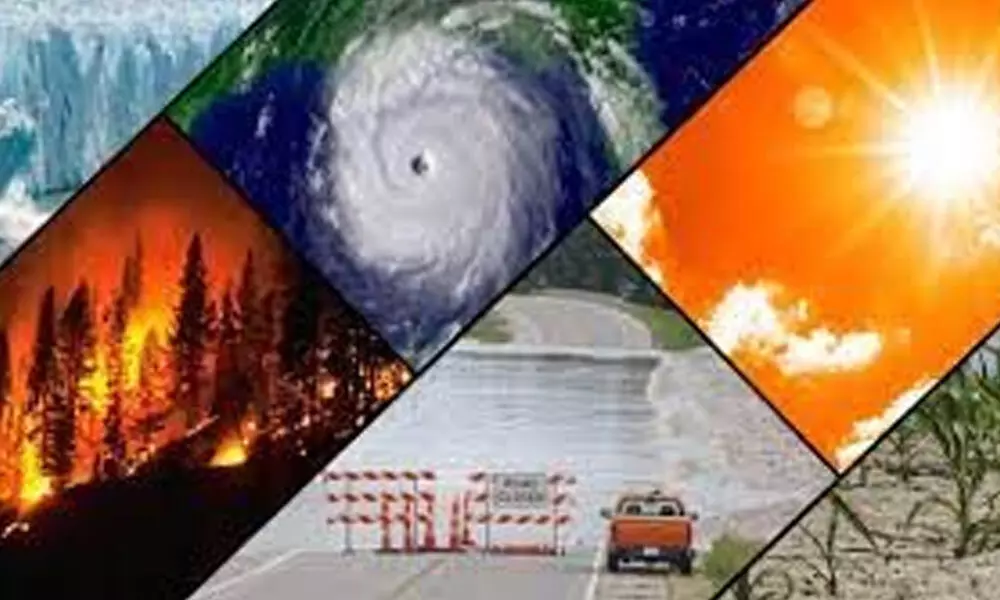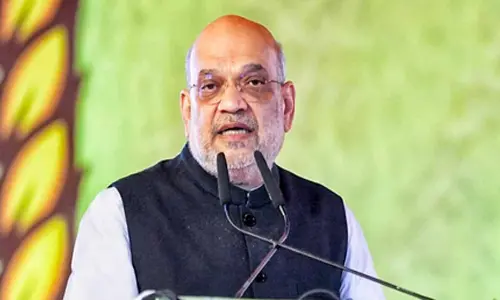States too need Climate Change Index

States too need Climate Change Index
India's path-breaking announcements on Climate Change at Cop-26 were welcomed by most nations
India's path-breaking announcements on Climate Change at Cop-26 were welcomed by most nations. Among Prime Minister Modi's verbal commitments as part of a fivefold 'Panchamrit' strategy to save the planet is the most important commitment that India will achieve Net Zero by 2070.
At Glasgow, recognising the urgency of the challenge, ministers from all over the world agreed that countries should come back this year to submit stronger 2030 emissions reduction targets with the aim of closing the gap to limiting global warning to 1.5 degree C. If we do not stick to this, the worst impacts of climate change will be wrought on us. Scientists are warning that climate change is a key driver of extinction.
Climate action was highlighted as one of the pillars underpinning the budget, however, several follow-up steps need to be taken if the Net Zero goals are to fructify.
Meanwhile, government agencies like NITI Aayog are focusing on growth and development issues as per their mandates. NITI Aayog is encouraging competitiveness among the States by coming out with indices on various aspects of governance including Good Governance, Health and Sustainable Development Goals. Is it not time, therefore, that we encouraged competitiveness in states with an index relating to Climate Change measures also?
Climate Change mitigation and adaptation measures will provide the States and the country an opportunity to reduce emissions and alleviate some of the pain we had to suffer on account of the impact of Climate Change. Each and every decision they take in the long term has to be viewed through the Climate Change prism. For example, we had urban flooding in various parts of the peninsula and recurrent cyclones in the coastal states which damaged public property and brought all economic activity to a standstill for a few weeks, causing huge losses to the exchequer. The increase in the frequency and intensity of these events is being attributed to climate change.
In the SDG index brought out by the NITI Aayog, based on the UN's Sustainable Development Goals (SDGs), which is more of a developmental index than one covering the whole span of the 17 SDG goals, only 7 goals are linked to environmental issues directly, viz., Clean water and sanitation, Affordable and clean energy, Sustainable Cities and Communities, Responsible Consumption and Production, Climate action, Life below water and Life on Land.
None of the seven goals monitored by the NITI Aayog or the States monitors Climate Change. Even under the climate action goal performance for the States, parameters do not address emissions, fossil fuels usage (in terms of the total range of fossil fuels) and electricity consumption, among other issues. The one pertinent parameter is the "percentage of renewable energy out of total installed generating capacity." The other SDG Index parameters under this goal which can be part of a Climate Change index are: Number of human lives lost per 1 crore of the population on account of extreme weather events; Disaster preparedness score as per the National Disaster Risk Index; CO2 saved from LED bulbs per 1,000 population and Disability Adjusted Life Years (DALF) rate attributable to air pollution per 1,00,000 population. These figures relate to fossil fuel consumption, but not coal or natural gas production and usage. Emissions due to livestock and agriculture do not even figure in the mix of things.
In the Sustainable Cities and Communities goal, parameters like the area of water bodies in the state and green public spaces area would make sense. Economic loss due to extreme weather conditions like urban flooding of Chennai could also be tabulated. In this goal category, "Installed sewage treatment capacity as a percentage of sewage generated in urban areas" is a pertinent parameter. Another parameter could be the amount of faecal sludge generated and the installed capacity of faecal sludge treatment plants. Other parameters that are already present in this goal and could be part of a Climate Change Index are: Percentage of urban households with drainage facility; Percentage of individual household toilets constructed against the target etc.
In the Responsible Consumption and Production goal, an indicator of electricity consumption to GSDP ratio could also be a useful tool to track Climate Change.
In the Life Below Water goal, the parameters which can continue in a Climate Change Index are: Mean shore zone coastal water quality; Biochemical Oxygen Demand; Mean shore zone coastal water quality; Total Nitrogen Average marine acidity (pH) measured at representative sampling stations in the shore zone.
In the Life on Land goal, the parameters which can continue in a Climate Change Index are Forest cover as a percentage of total geographical area, Tree cover as a percentage of total geographical area, Percentage of the area covered under afforestation schemes of the total geographical area. Another parameter should be the adoption of Climate Change as part of the curriculum in educational institutions as in Maharashtra. The more awareness there is about climate change the more the debate there is around it which in turn should motivate more work on solutions around it.
The Climate Change index should be a key component of the Good Governance Index and can be considered for assessing performance of key Central departments in mitigating the impact of Climate Change in their programmes and projects.
(Writer is an environmental activist)














